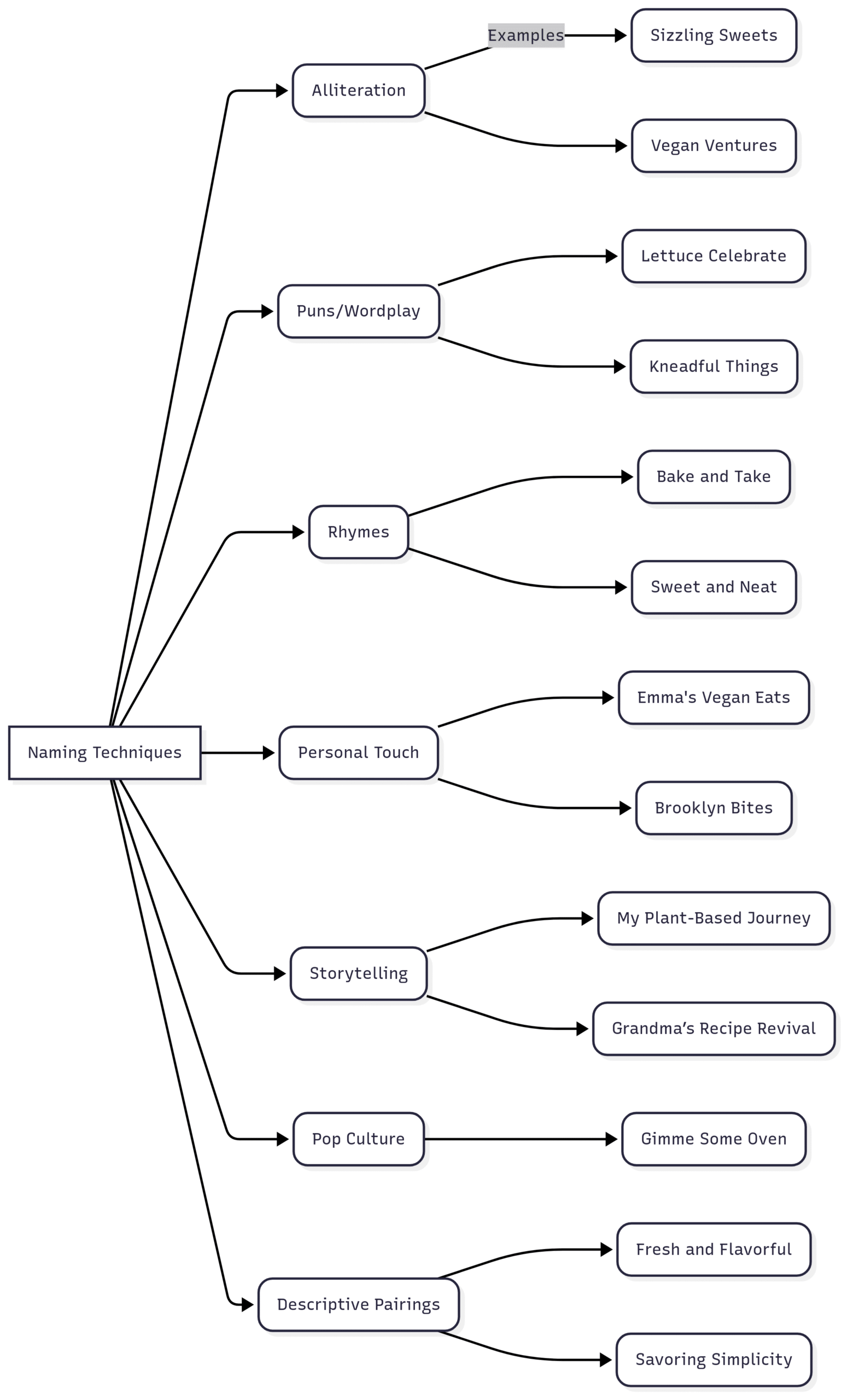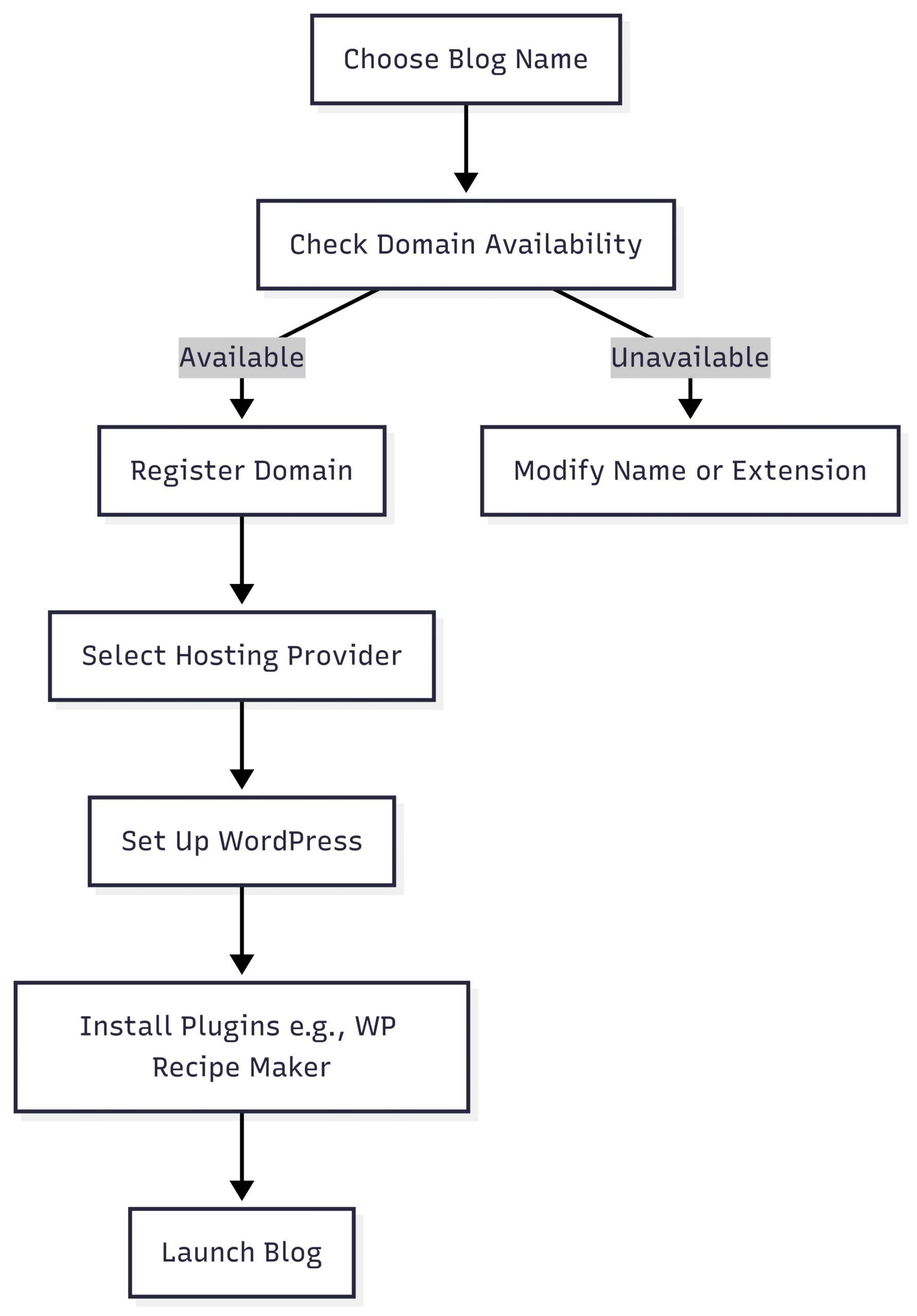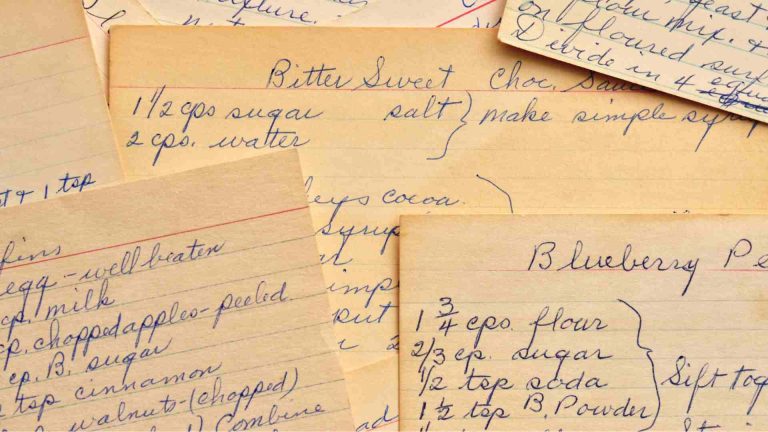What is a good name for food blogging?
Discover how to choose a memorable food blog name with niche-focused, catchy ideas and practical tips for lasting success.
Choosing the perfect name for your food blog is a critical step in establishing your online presence. A well-crafted name not only reflects your culinary niche and personality but also attracts your target audience, enhances your brand, and improves your blog’s discoverability. This comprehensive guide, explores the art and strategy of naming a food blog. From brainstorming creative ideas to securing a domain, we’ll cover everything you need to create a memorable and effective name that stands the test of time, optimized for both readers and search engines.
Why Your Food Blog Name Matters
Your food blog’s name is the cornerstone of your brand identity. It’s the first impression readers have of your content, signaling what they can expect—whether it’s vegan recipes, quick weeknight meals, or gourmet desserts. A strong name helps you:
- Define Your Niche: It communicates your focus, whether it’s a specific cuisine, dietary preference, or cooking style.
- Attract Your Audience: A name that resonates with your target readers encourages engagement and loyalty.
- Boost SEO: A descriptive, keyword-rich name can improve your blog’s visibility on search engines like Google.
- Build a Brand: A unique name lays the foundation for future monetization, social media presence, or even product lines.
However, choosing a name can feel daunting. What if it doesn’t reflect your evolving content? What if it’s already taken? This guide will walk you through a structured process to craft a name that’s catchy, unique, and future-proof, while avoiding common pitfalls like overly generic or trendy names.
Key Considerations Before Brainstorming
Before diving into creative ideas, reflect on these four factors to ensure your name aligns with your blog’s vision:
- Theme and Niche: Is your blog focused on a specific cuisine (e.g., Italian, vegan, or barbecue)? Are you targeting a broad or niche audience? A niche blog benefits from a specific name, while a general food blog needs a name that stands out in a crowded market.
- Target Audience: Who are your readers? Busy professionals, families, or health-conscious millennials? Understanding their preferences will guide your tone and wording.
- Tone and Voice: Do you want a playful, professional, or approachable tone? Your name should reflect the voice you’ll use in your content.
- Future Scalability: Will your name work for social media handles, a logo, or a product line? Ensure it’s versatile enough to grow with your blog.
Common Pitfalls to Avoid
- Overly Generic Names: Names like “Food Blog” or “Recipes” lack personality and are hard to rank on Google due to competition.
- Trendy Names: Avoid names tied to fleeting fads (e.g., “Avocado Toast Adventures”) that may feel dated in a few years.
- Complex or Unpronounceable Names: If readers can’t say or spell your name, they’re less likely to remember or share it.
Step-by-Step Guide to Naming Your Food Blog
Follow this structured, four-step process to brainstorm and select the perfect food blog name.
Step 1: Brainstorm Valuable and Versatile Words
Start by generating a list of words and phrases that capture the essence of your blog. This is a creative exercise, so let your ideas flow freely. Here’s how to spark inspiration:
- Reflect on Your Blog’s Focus: Write down 10–15 words related to your theme. For example, a vegan blog might include “plant-based,” “green,” “vegan,” “healthy,” or “cruelty-free.”
- Explore Other Blogs: Browse successful food blogs like Pinch of Yum or Half Baked Harvest to identify words that resonate. Note what you like or want to differentiate.
- Use a Thesaurus: Look up synonyms for common food-related words to find unique alternatives. For instance, instead of “tasty,” try “savory,” “delectable,” or “scrumptious.”
- Read Restaurant Reviews: Professional reviews often use evocative language like “zesty,” “rustic,” or “indulgent” that can inspire your name.
- Incorporate Foreign Words (Carefully): A French term like “gourmand” or an Italian word like “saporito” (flavorful) can add flair, but ensure it’s easy to spell and pronounce.
Example Word List for a Vegan Dessert Blog:
- Vegan
- Sweet
- Indulgent
- Plant-based
- Dessert
- Bliss
- Treat
- Bakery
- Cruelty-free
- Decadent
- Homemade
- Joy
Step 2: Organize Words into Categories
Group your brainstormed words to streamline the naming process. This helps you identify patterns and narrow your options. Common categories include:
- Niche-Specific Words: E.g., “vegan,” “keto,” “sourdough,” “Italian.”
- Action Verbs: E.g., “cook,” “bake,” “whisk,” “savor.”
- Descriptive Adjectives: E.g., “simple,” “fresh,” “zesty,” “cozy.”
- Audience-Focused Words: E.g., “family,” “busy,” “student,” “kid-friendly.”
- Playful or Emotional Words: E.g., “joy,” “delight,” “crave,” “love.”
Example Grouping for a Vegan Dessert Blog:
| Category | Words/Phrases |
|---|---|
| Niche-Specific | Vegan, Plant-based, Cruelty-free |
| Action Verbs | Bake, Whisk, Indulge |
| Descriptive | Sweet, Decadent, Homemade |
| Audience-Focused | Busy, Family, Young Adults |
| Playful/Emotional | Bliss, Joy, Treat, Delight |
You can also create an alphabetical list for quick reference when experimenting with alliteration or rhymes.
Step 3: Experiment with Word Combinations
Now, combine your words to create potential blog names. Aim for names that are catchy, memorable, and reflective of your niche. Here are techniques to try:
- Alliteration: Pair words with the same starting sound, like “Sizzling Sweets” or “Vegan Ventures.”
- Puns and Wordplay: Use food-related puns, such as “Lettuce Celebrate” or “Kneadful Things.”
- Rhymes: Create catchy rhythms, like “Bake and Take” or “Sweet and Neat.”
- Personal Touch: Add your name or location, e.g., “Emma’s Vegan Eats” or “Brooklyn Bites.”
- Storytelling: Reflect your blog’s origin, like “My Plant-Based Journey” or “Grandma’s Recipe Revival.”
- Pop Culture References: Adapt phrases, like “Gimme Some Oven” (from “gimme some lovin’”).
- Descriptive Pairings: Combine evocative words, like “Fresh and Flavorful” or “Savoring Simplicity.”
Example Combinations for a Vegan Dessert Blog:
- Vegan Bliss Bakery
- Plant-Based Treats
- Sweet Vegan Joy
- Decadent Plant Plates
- Whisked Bliss
- Cruelty-Free Cravings
- Homemade Vegan Sweets
Chart: Naming Techniques

If you’re stuck, try a blog name generator like Business Name Generator or Namelix. While these tools may produce generic results, they can spark new ideas or combinations.
Step 4: Finalize and Secure Your Name
Once you’ve shortlisted 3–5 names, it’s time to pick a winner and make it official. Follow these steps:
-
Check Availability:
- Domain Name: Use tools like NameCheap or Domainr to verify if your preferred name is available as a “.com” domain (preferred for credibility). If unavailable, consider “.co” or “.kitchen” extensions, but avoid obscure ones like “.xyz.”
- Social Media Handles: Ensure the name or a close variation is available on platforms like Instagram, Twitter, and Pinterest. Consistency across platforms strengthens your brand.
- Test Pronunciation and Spelling: Say the name aloud and ask friends for feedback. Avoid names that are hard to spell or pronounce, as they hinder shareability.
- Evaluate Longevity: Ensure the name can grow with your blog. For example, “Vegan Desserts” is specific but may limit you if you expand to savory recipes.
-
Secure the Name:
- Register the Domain: Purchase through a registrar like NameCheap or GoDaddy. Expect to pay $10–$15/year for a “.com” domain.
- Claim Social Media Handles: Even if you’re not active yet, reserve handles to prevent others from taking them.
- Consider a Tagline: Pair your name with a tagline to clarify your focus, e.g., “Vegan Bliss Bakery: Plant-Based Sweets for Every Craving.”
Table: Domain Registrar Pricing Comparison
| Registrar | .com Domain (1 Year) | Renewal Price | Additional Features |
|---|---|---|---|
| NameCheap | $10–$13 | $13–$15 | Free WHOIS privacy |
| GoDaddy | $12–$15 | $15–$20 | Domain auctions, hosting |
| Google Domains | $12 | $12 | Google Workspace integration |
Note: Prices are approximate and may vary based on promotions or availability.
Creative Food Blog Name Ideas by Niche
To inspire you, here are curated name ideas across popular food blog niches. Each is designed to be catchy, memorable, and SEO-friendly.
Specific Cuisine
- The Parisian Pantry
- Spicy Southern Bites
- Mediterranean Munchies
- Tokyo Tastes
- Indian Spice Journey
Dietary Focus
- The Vegan Venture
- Gluten-Free Goodness
- Keto Kitchen Chronicles
- Paleo Plate
- Low-Carb Delights
Specific Food Type
- The Chocolate Lab
- Sourdough Stories
- The Pasta Project
- Pizza Pilgrimage
- Sushi Snapshots
Cooking Style
- Weeknight Warrior
- Slow Cooker Society
- Pressure Cooker Pro
- The Baking Bandit
- Grill Master Gazette
Audience-Specific
- Young Adults: Snack Attack, Dorm Room Delights
- Busy Professionals: Quick & Easy Kitchen, Meal Prep Magic
- Families: Family Food Fun, Kid-Friendly Kitchen
Crafting a Mission Statement to Guide Your Name
A mission statement clarifies your blog’s purpose and can inspire your name. It should answer:
- What’s your goal? E.g., “Inspire busy professionals to cook healthy meals.”
- What specifics define your blog? E.g., “Focus on vegan recipes using simple ingredients.”
- Who are you? E.g., “A home cook passionate about plant-based desserts.”
Example Mission Statement for a Vegan Dessert Blog:
“As a passionate home baker, I aim to inspire busy individuals to enjoy indulgent, plant-based desserts made with simple, cruelty-free ingredients.”
Keywords Extracted:
- Passionate
- Home baker
- Busy individuals
- Plant-based
- Desserts
- Simple
- Cruelty-free
- Indulgent
Name Ideas from Mission Statement:
- Simple Plant Sweets
- Cruelty-Free Cravings
- Indulgent Vegan Bites
- Busy Baker’s Bliss
Enhancing Your Name with a Tagline
A tagline complements your name by clarifying your blog’s value. It’s especially useful for branded or ambiguous names. Examples:
| Blog Name | Tagline |
|---|---|
| Vegan Bliss Bakery | Plant-Based Sweets for Every Craving |
| The Baking Bandit | Stealing Hearts with Homemade Treats |
| Sizzling Sweets | Fiery Flavors, Sweet Results |
Practical Tips for Long-Term Success
- Keep It Short: Aim for 2–3 words to ensure memorability and ease of typing.
- Avoid Numbers or Special Characters: They complicate URLs and social handles (e.g., “Food4U” is less clean than “FoodForYou”).
- Test with Your Audience: Share your top picks with friends or potential readers to gauge appeal.
- Plan for Monetization: A versatile name supports future ventures like cookbooks or sponsored content.
- Use Tools for Efficiency: Leverage domain checkers and name generators to save time.
Registering and Hosting Your Blog
Once you’ve chosen a name, follow these steps to establish your online presence:
- Register Your Domain: Use a registrar like NameCheap or GoDaddy. Ensure your domain matches your blog name or is a close variation.
- Choose a Hosting Provider: Popular options include Bluehost ($3–$5/month for basic plans) or SiteGround ($4–$7/month). Hosting allows you to build your site on platforms like WordPress.
- Set Up Your Blog: Use WordPress for its flexibility and plugins like WP Recipe Maker to enhance recipe presentation. Expect hosting and plugin costs to range from $50–$100/year for beginners.
Chart: Blog Setup Process

Conclusion
Naming your food blog is a blend of creativity and strategy. By focusing on your niche, audience, and tone, and following a structured brainstorming process, you can craft a name that’s catchy, unique, and SEO-friendly. Whether you choose “Vegan Bliss Bakery” or “Sizzling Sweets,” ensure it’s available, pronounceable, and scalable. Pair it with quality content and a user-friendly site to turn your blog into a culinary destination. Start brainstorming today, and let your food blog name set the stage for your success!
Please share these What is a good name for food blogging? with your friends and do a comment below about your feedback.
We will meet you on next article.
Until you can read, How to become a food writer with no experience






